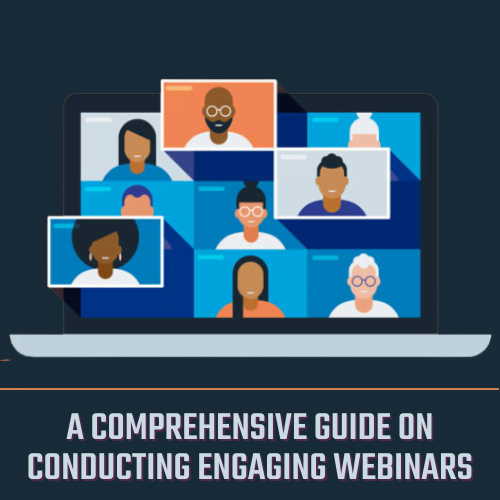A Comprehensive Guide on Conducting Engaging Webinars: Online webinars have become an invaluable tool for businesses and individuals to connect with a wide audience, share knowledge, and drive action. To conduct a successful online webinar that leaves a lasting impression and encourages participants to take action, consider the following key strategies:
1. Define Your Goals and Target Audience
Before diving into webinar preparations, clearly define your goals and identify your target audience. Understanding your objectives will help you shape your content and tailor it to meet the specific needs and interests of your audience.
2. Plan Engaging and Relevant Content
Crafting engaging and relevant content is crucial to capturing and maintaining the attention of your audience. Begin with a compelling introduction that grabs their attention and clearly outlines what they can expect from the webinar. Organize your content into logical sections and use visuals, stories, and real-life examples to make it relatable and memorable.
3. Choose the Right Webinar Platform
Selecting a reliable and user-friendly webinar platform is essential for delivering a seamless and enjoyable experience to your audience. Consider features such as screen sharing, interactive polls, and chat functionalities that promote engagement and interactivity.
4. Practice and Rehearse
Prior to the webinar, allocate ample time for practice and rehearsals. Familiarize yourself with the webinar platform, test audio and video equipment, and ensure smooth transitions between slides or sections. Rehearsing will boost your confidence and help you deliver the content in a polished and professional manner.
5. Engage with Your Audience
Interacting with your audience throughout the webinar is crucial for keeping them engaged and interested. Encourage participants to ask questions, provide feedback, and participate in polls or surveys. Address their queries and comments promptly to make them feel valued and connected to the content.
Also Read: 5 point plan to create webinar slides that convert
6. Utilize Visual Aids Effectively
Visual aids such as slides, videos, and infographics can enhance the understanding and retention of information. Ensure your visual aids are visually appealing, easy to read, and complement your spoken words. Use a clean and uncluttered design, and avoid overwhelming the audience with excessive text or complicated visuals.
7. Incorporate Stories and Case Studies
Weaving stories and case studies into your webinar can make it more relatable and memorable for your audience. Share real-life examples, success stories, or testimonials that demonstrate the practical application of your content. This not only keeps participants engaged but also builds credibility and trust.
8. Inspire and Motivate
Throughout the webinar, aim to inspire and motivate your audience to take action. Clearly communicate the benefits or outcomes they can achieve by implementing the information you provide. Use persuasive language, share success stories, and present actionable steps they can take immediately.
9. Include a Compelling Call-to-Action
At the end of your webinar, include a compelling call-to-action that aligns with your goals. Clearly communicate the next steps you want your audience to take, whether it’s signing up for a newsletter, registering for a follow-up webinar, or purchasing a product or service. Emphasize the value they will gain by taking action.
10. Follow Up and Provide Resources
After the webinar, follow up with participants by providing additional resources, such as slide decks, recordings, or supplementary materials. This reinforces the value of the webinar and helps participants further engage with the content. Personalize follow-up emails whenever possible to strengthen the connection.
By implementing these strategies, you can conduct a successful online webinar that impresses your audience and encourages them to take action. Remember to continuously evaluate and improve your webinar approach based on participant feedback and analytics to refine your future webinars further.
FAQs
1. How long should an online webinar typically be? The duration of an online webinar can vary depending on the topic and the level of audience engagement. As a general guideline, aim for a webinar duration of 45 minutes to an hour, including time for Q&A.
2. Should I provide handouts or materials during the webinar? Yes, providing handouts or downloadable materials during the webinar can enhance the learning experience for participants. Consider offering supplementary resources that reinforce the key points discussed.
3. How can I keep participants engaged during the webinar? To keep participants engaged, incorporate interactive elements such as polls, quizzes, and live chat. Encourage audience participation by asking questions, seeking their opinions, and addressing their queries promptly.
4. Is it necessary to have a professional setup for an online webinar? While a professional setup can enhance the quality of your webinar, it is not a requirement. Focus on delivering valuable content and ensuring a reliable internet connection, clear audio, and good lighting for participants to see you clearly.
5. Can I repurpose the webinar content for other purposes? Absolutely! Repurposing webinar content is a great way to extend its reach. Consider transforming the webinar into blog posts, social media content, or downloadable guides to reach a wider audience.



